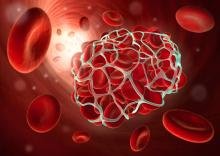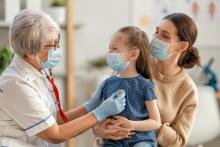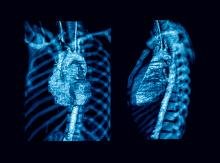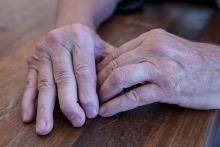Multicenter studies and registries, PANLAR research bets
Estefanía Fajardo
Research is one of the main paths that PANLAR aims to follow in the region. Therefore, it has developed different strategies and methodologies to enhance it and have more documentation of autoimmune rheumatic diseases in our population.
Guidelines, registries, multicenter studies are part of this process, and will be presented at the PANLAR 2022 Congress to be held from August 10 to 13 in Miami, USA.
In the oral presentations, the first report of the PANLAR axial spondyloarthritis registry (ESPALDA PANLAR Registry) (ABS-1397) will be presented with the aim of describing the most relevant clinical, laboratory and imaging findings reported in the registry including consecutive patients older than 18 years with axial spondyloarthritis (ASAS 2009 criteria) from centers in Argentina, Uruguay, Chile and Venezuela. Demographic data, age at symptom onset, duration of illness, illness-related symptoms, and comorbidities were recorded.
In this first report of the ESPALDA registry, a lower proportion of HLA-B27 is observed in our region; the other general characteristics were comparable with other axSpA cohorts. Besides, the delay in diagnosis continues to be a problem, being in this cohort of 40 months.
Regarding rheumatoid arthritis, Peru developed a multicenter study from December 2021 to February 2022 (ABS-1362) in order to determine the factors associated with the discrepancy between the Index of Routine Activity of the Patient Disease-3 (RAPID- 3) and the Index of Clinical Activity of the Disease (ICD) in patients with Rheumatoid Arthritis (RA).
Analyzes indicated that disability and patient perception were associated with a positive discrepancy, while sociodemographic factors and physician perception were associated with a negative discrepancy. These factors must be considered for an adequate RAPID-3 applicability in our Latin American patients with RA.
On the other hand, and also in the RA line, one of the oral presentations addresses skeletal muscle wasting (ABS-1290) considering that rheumatoid arthritis is an autoimmune disease that affects the joints, causing chronic synovial inflammation.
It was established that isobutyric acid, oxoisovalerate, and dimethylglycine from urine samples were associated with low skeletal muscle mass in RA patients. These results suggest that this group of metabolites can be tested as biomarkers for the identification of skeletal muscle wasting.
Additionally, patients with rheumatoid arthritis usually present extra-articular manifestations, which affect muscle mass and, consequently, physical function (ABS-1295). This research work tested muscle morphology by ultrasound (MU) to verify the associations of the quadriceps muscle with clinical features, muscle strength, functional capacity and physical function.
This paper identified that pennation angles (the angle formed by the fascicles and the internal aponeurosis) of the quadriceps muscle assessed by ultrasound (RF, VI, and VL muscles) were associated with the standing test and the DAS-28. In addition, the level of disease activity assessed by DAS-28 also seems to affect the quadriceps muscle. Finally, MU may be a useful method to assess the impact of disease on skeletal muscle.
This is also an autoimmune disease that affects diarthrodial joints (ABS-1606). The pathogenesis of RA is mainly due to dysregulation of the synthesis of cytokines and autoantibodies; B cells are essential in those processes. In a study with 60 diagnosed patients, they sought to determine the expression of the CD69, IL-10R and IL-17R receptors and the frequency of subpopulations of B cells in the peripheral blood of patients with RA and control subjects (CS).
Furthermore, in this line of research it is also known that growth differentiation factors 8, 11 play an important role in muscle homeostasis (ABS-1424). The objective of this study to be presented at PANLAR was to evaluate the levels of GDF-8, GDF-11 in muscle in early and established stages through the methodology with mice.
It was established that GDF-11 mRNA and protein expressions are increased and related to physical deterioration, while GDF-8 expression is reduced in established disease and increased in serum over time in the model of induced arthritis. Therefore, GDFs may have a role in muscle outcomes in the model.
The researchers, who will present their work, concluded that the expression of IL-10R and IL-17R suggests that IL-10 and IL-17 could play a fundamental role in the activation of B cells in patients with AR. The expression of IL-17R is higher than that of IL-10R, which has not been reported. Memory B cells predominate in CS compared to RA patients, which leads to a greater differentiation process towards other subpopulations such as autoantibody-producing cells; thus, IL-17R could play a relevant role in disease control.
In the category of basic sciences, the anti-inflammatory and immunomodulatory effects of the B antigen of Echinococcus Granulosus in experimental arthritis (ABS-1529) will be exposed, that is, a work developed in mouse models of induced arthritis and whose results suggest an effect of AgB in the early pathophysiology of arthritis, reducing the influx of inflammatory cells to the knee joint of mice with acute arthritis, and analgesic and anti-inflammatory potential in acute and chronic models of arthritis.
Another of the works that will arrive at PANLAR 2022 aim to evaluate the frequency of adverse events and the survival of treatments according to age in patients with rheumatoid arthritis (RA), psoriatic arthritis (PsA) or ankylosing spondylitis (AS) (ABS-1459) through a retrospective, observational and multicenter study of real data from patients included in the BIOBADASAR 3.0 registry with 5,297 patients, (80.3% women and mean age of 43.7 years).
This study demonstrated a higher occurrence of adverse events in older adults and mature adults compared to youth and young adults. In contrast, survival for b-DMARDs and ts-DMARDs was higher in juveniles and young adults. In RA patients, female gender, corticosteroid treatment, older age, and longer disease duration were associated with treatment discontinuation.
In the images section, a work addresses how ultrasound could detect subclinical interstitial lung disease in systemic sclerosis (ABS-1205) including 133 patients without respiratory symptoms and 133 healthy controls.
The conclusion indicates that ultrasound is valid to detect subclinical ILD-SSc. Our results showed a high prevalence of this complication. Despite encouraging data, its role in monitoring ILD progression in SSc appears to remain controversial.
Lupus is another of the axes of approach of the oral presentations. One of them seeks the association between cognitive impairment in systemic lupus erythematosus with antiphospholipid antibodies (ABS-1331) through an analytical cross-sectional, single-center case-control study nested in a cohort.
In this study, 30% of patients had cognitive impairment, with a clear association with positive antiphospholipid antibodies, even without defined antiphospholipid syndrome. We emphasize the importance of periodically evaluating the cognitive in these patients to limit its consequences.
Patients with systemic lupus erythematosus have an increased risk of developing a cardiovascular event. One study (ABS-1420) seeks to evaluate the association of the systemic lupus erythematosus disease activity index (SLEDAI) and echocardiographic parameters in patients with SLE in a cross-sectional study that recruited 67 patients.
Higher SLEDAI scores are associated with higher left ventricular mass index and E/e (Ratio of early diastolic mitral inflow velocity to early diastolic mitral annulus velocity). The approach is comprehensive and seeks works investigating different branches of rheumatology, one of them to be presented establishes the clinical and serological characteristics, autoantigen expression and cytokine/chemokine profile in patients with anti-Mi-2 seropositive myositis (ABS-1531) considering that there are still many unresolved questions regarding the clinical role of the presence and persistence of myositis-specific autoantibodies.
With respect to anti-Mi-2, it has been observed that its prevalence increases according to its proximity to the equatorial zone. Since Mexico has the highest worldwide prevalence of this autoantibody (59%) due to its geographical location, we sought to obtain a better characterization of these patients with serum samples from twenty patients, as well as six muscle samples from patients with myositis, classified according to EULAR/ACR 2017 criteria.
It was concluded that anti-Mi-2 prevails as the most frequent autoantibody in the Mexican population, Mi-2β expression seems to be higher in serum and muscle of patients with myositis. However, Mi-2α expression differs between seropositive and seronegative anti-Mi-2 myositis patients.
Another of the characterizations was made in the skin biopsies taken in pediatric patients with suspected vasculitis at the Pablo Tobón Uribe Hospital in Medellín, Colombia (ABS-1559), making an exploratory analysis of the role of the biopsy in the diagnostic process, taking 72 of the 432 skin biopsies with suspicion.
In this series, most of the skin biopsies of pediatric patients taken with suspected vasculitis were diagnosed as mimetic vasculitis. Thus, establishing that skin biopsy is a valuable diagnostic tool when requested based on a good clinical approach.
The covid-19 pandemic and the relationship between the SARS-CoV-2 virus, vaccines and rheumatic diseases could not be left out. Therefore, a comparison of the immunogenicity between covid-19 vaccines from Pfizer, Sinovac and AstraZeneca in patients with SLE (ABS-1520) will be presented.
All three covid-19 vaccines after two doses induced significant antibody production, which may improve protection against infection. However, the use of immunosuppressive therapy (cyclophosphamide and high doses of GCS) can significantly reduce this response.
To reach a conclusion on actual protection, further immunological studies are needed, including cellular immunity and correlates of protection from different vaccine platforms in SLE patients with elevated immunosuppressive therapy.
Finally, one of the papers to be presented addresses the alteration of P-wave dispersion and the left atrial volume index in patients with immune-mediated diseases (ABS-1381) through an analytical cross-sectional observational study.
It concludes that there is an alteration of P-wave dispersion and an increase in the left atrial volume index in patients with immune-mediated disease. However, these data should be corroborated by other studies that include a cohort with a larger number of patients and contemplate a follow-up to determine the impact of these findings on patient prognosis.
Remember that the complete schedule of activities, with the details of all the sessions day by day, can be reviewed here . In addition, you may access all the works presented in the book of abstracts of the congress (1).
REFERENCES
- JCR: Journal of Clinical Rheumatology: July 2022 - Volume 28 - Issue S1 - p S1-S95. Available at https://journals.lww.com/jclinrheum/Citation/2022/07001/PANLAR_Abstracts_2022.1.aspx




























































